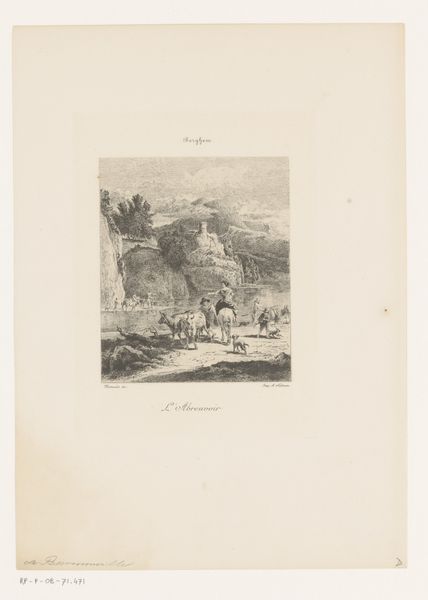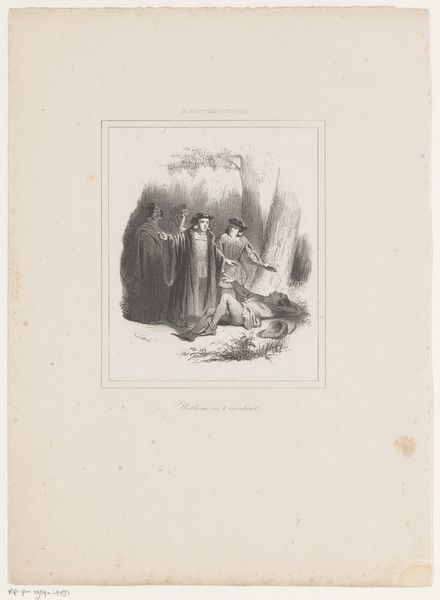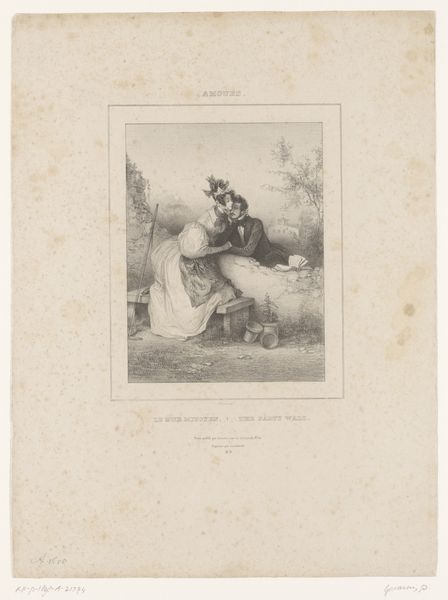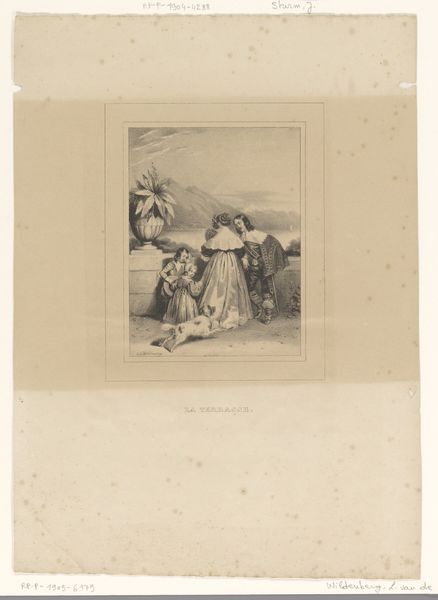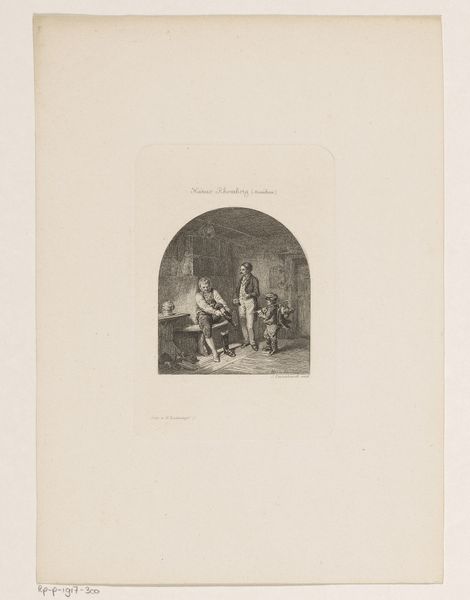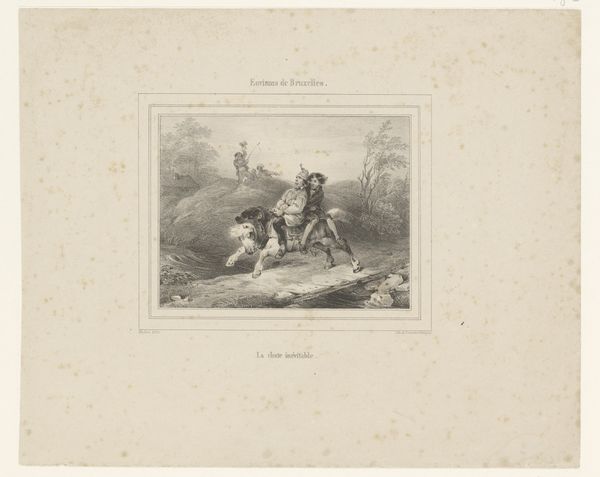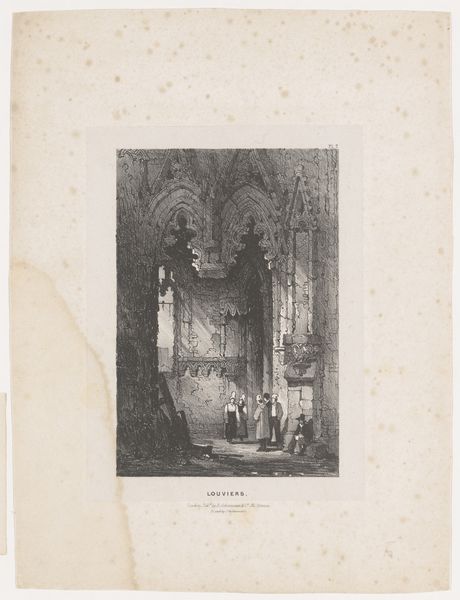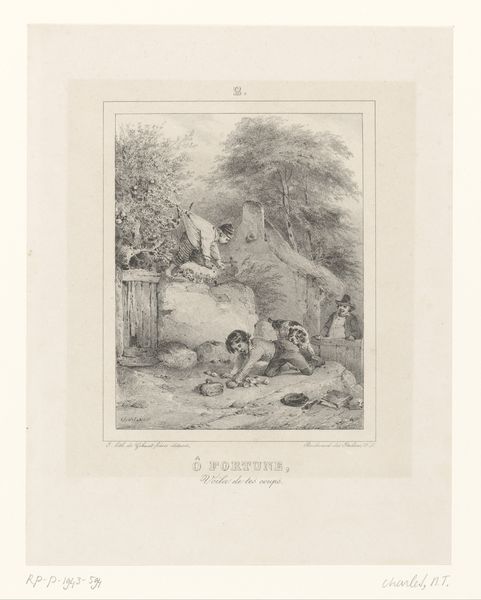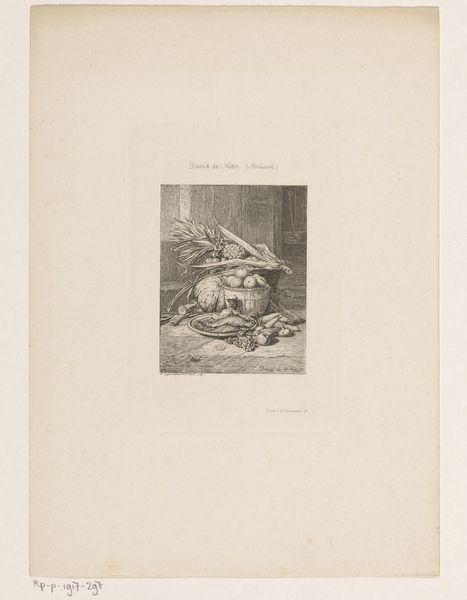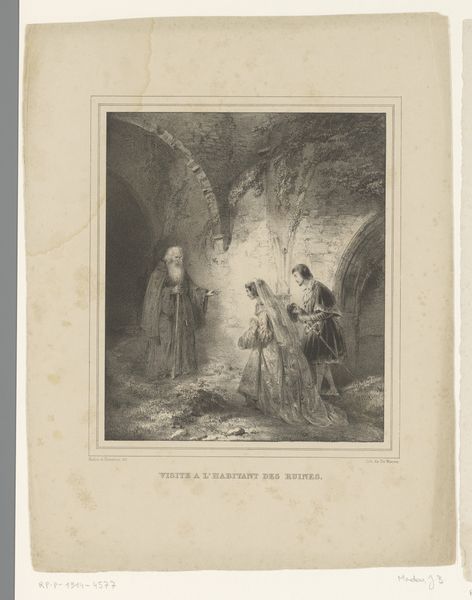
Groep figuren voor een poort in een vervallen straat c. 1827 - 1851
0:00
0:00
drawing, print, etching
#
portrait
#
drawing
# print
#
etching
#
light coloured
#
old engraving style
#
romanticism
#
cityscape
#
genre-painting
Dimensions: height 350 mm, width 265 mm
Copyright: Rijks Museum: Open Domain
Jean-Baptiste Madou made this print, "Groep figuren voor een poort in een vervallen straat," using lithography, a printmaking technique that democratized image production in the 19th century. Unlike older methods like etching or engraving that required specialized skills and tools, lithography allowed artists to draw directly onto a stone or metal plate, making it more accessible. Look closely at the image. The granular texture and subtle tonal gradations result from the lithographic process, where the greasy ink adheres only to the drawn areas, transferring the image to paper under pressure. This print hints at the changing social landscape of the time. Lithography enabled mass production and dissemination of images, fueling political movements and shaping public opinion. Madou's choice of subject matter, depicting figures amidst urban decay, reflects concerns about industrialization, labor and class divisions, and the human cost of progress during a period of rapid change. The level of work involved in the labor-intensive process mirrors the social issues it portrays, inviting us to consider the relationship between art, industry, and society.
Comments
No comments
Be the first to comment and join the conversation on the ultimate creative platform.
